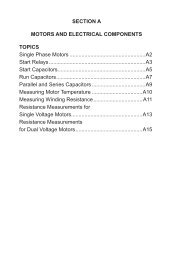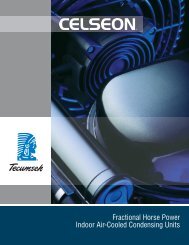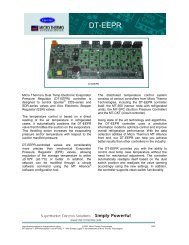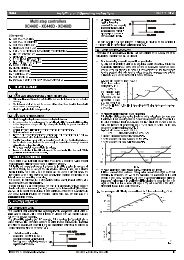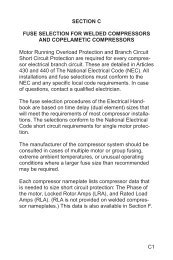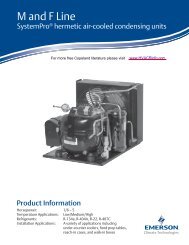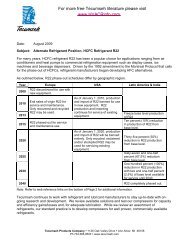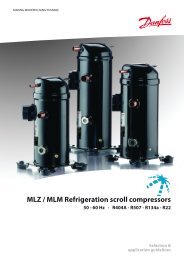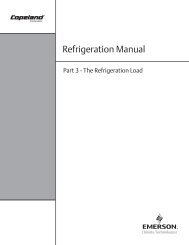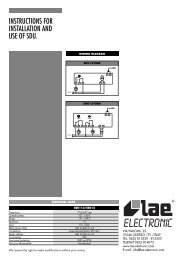Refrigeration Manual - HVAC and Refrigeration Information Links
Refrigeration Manual - HVAC and Refrigeration Information Links
Refrigeration Manual - HVAC and Refrigeration Information Links
You also want an ePaper? Increase the reach of your titles
YUMPU automatically turns print PDFs into web optimized ePapers that Google loves.
with balanced voltages. These opposing forces willproduce currents in the windings greatly in excess ofthose present under balanced voltage conditions.Voltage unbalance is calculated as follows:% Voltage Unbalance = 100 xMax. Voltage Deviation from Average Volt.Average VoltageFor example, in Figure 57, assume voltage AB is 220volts, BC is 230 volts, <strong>and</strong> AC is 216 volts.Average Voltage =216 + 220 + 2303 = 222 VoltsMaximum Deviation = 230 - 222 = 8 Volts100 X 8% Voltage Unbalance = 222 = 3.6%As a result of the voltage unbalance, the locked rotorcurrent will be unbalanced to the same degree. However,the unbalance in load currents at normal operatingspeed may be from 4 to 10 times the voltage unbalance,depending on the load. With the 3.6% voltage unbalancein the previous example, load current in one phase mightbe as much as 30% greater than the average line currentbeing drawn by the other two phases.The NEMA Motors <strong>and</strong> Generators St<strong>and</strong>ards Publicationstates that the percentage increase in temperature risein a phase winding resulting from voltage unbalance willbe approximately two times the square of the voltageunbalance.% Increase in Temperature =2 (Voltage Unbalance %)²Using the voltage unbalance from the previous example,the % increase in temperature can be estimated asfollows:% Increase in Temperature = 2(3.6 x 3.6) = 25.9%As a result of this condition, it is possible that one phasewinding in a motor may be overheated while the othertwo have temperatures within normal limits. If only twomotor protectors are being used, <strong>and</strong> the high currentwinding is not protected, ultimate motor failure mayoccur even though the protectors do not trip. Therefore,when installing external motor protectors for a motor inwhich only two of the three phases are to be protected,be sure the protectors are mounted in the phases withthe highest amperage draw.A common source of unbalanced voltage on a threephase circuit is the presence of a single phase loadbetween two of the three phases. (See Figure 58).A large unbalanced single phase load, for example alighting circuit, can easily cause sufficient variations inmotor currents to endanger the motor. If at all possible,this condition should be corrected by shifting the singlephase load as necessary. Supply voltages shouldbe evenly balanced as closely as can be read on acommercial voltmeter.A recent national survey by U.L. indicated that 36 out of83 utilities surveyed, or 43%, allowed voltage unbalancein excess of 3%, <strong>and</strong> 30% allowed voltage unbalanceof 5% or higher.In the event of a supply voltage unbalance, the powercompany should be notified of such unbalance todetermine if the situation can be corrected.Unless the unbalance can be corrected, the only wayto insure motor safety is to be sure the protectors aremounted in the high current phases when using two legprotection, or to use protectors in all three legs.A simple single phase condition in the load circuit willcause the current in two of the three phases to increase,while there will be no current in the open phase.A motor can be protected against this type of failurewith only two protectors, since there will always be atleast one protector in a line carrying the high singlephase current.© 1967 Emerson Climate Technologies, Inc.All rights reserved.10-11



